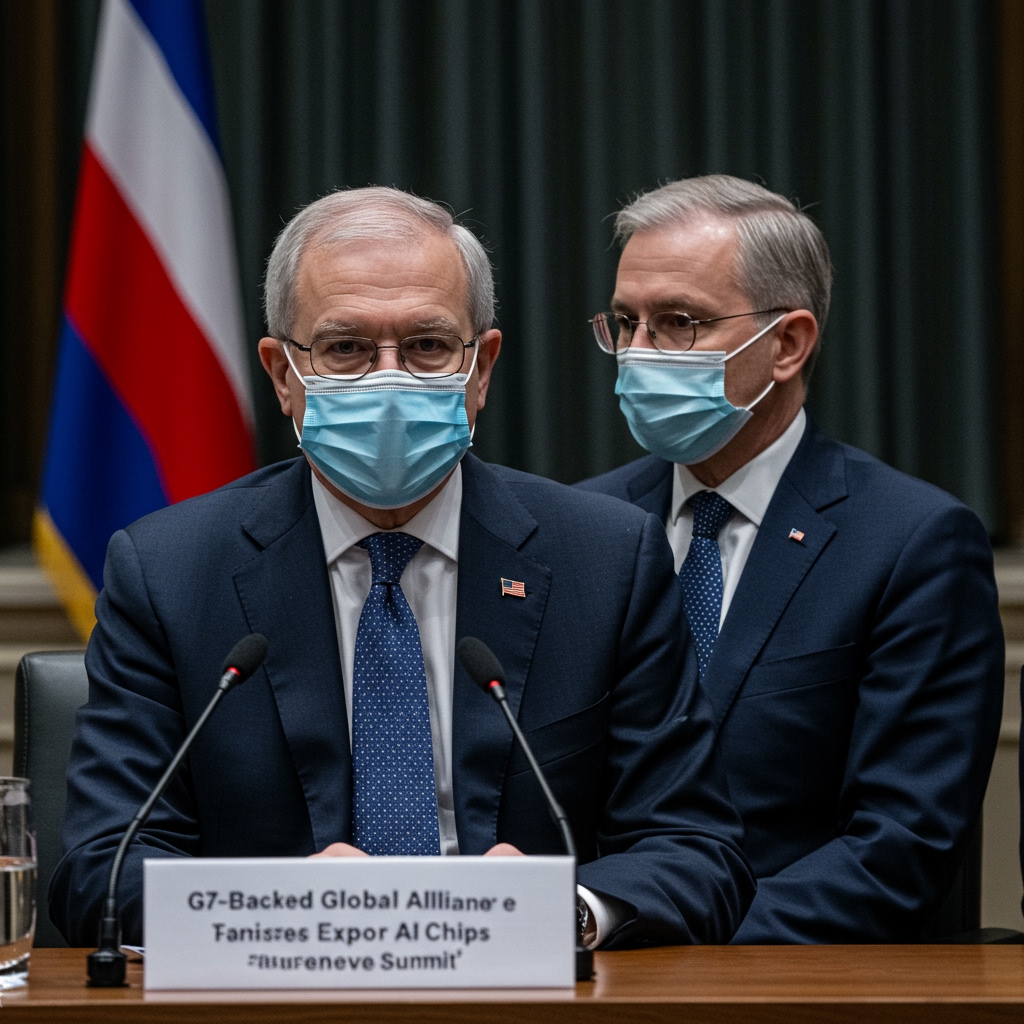Geneva, Switzerland – April 24, 2025 – A powerful coalition representing the G7 nations, formally known as the Global Tech Alliance, today delivered a significant policy statement outlining stringent proposed regulations for the development and deployment of advanced artificial intelligence chips. The declaration follows a critical two-day summit held here in Geneva, which concluded on April 24, 2025. The alliance cited escalating concerns surrounding the rapid advancements in AI hardware, specifically highlighting the potential for dual-use applications and the inherent vulnerabilities within complex global supply chains as key drivers for immediate action.
The summit brought together leading policymakers, technology experts, and national security advisors from G7 member states, underscoring the high level of strategic importance placed on governing the frontier of AI technology. Discussions focused intensely on the latest generation of AI processors, capable of performing operations at unprecedented speeds and efficiencies. These capabilities, while promising immense societal benefits, also raise profound questions about their potential weaponization or misuse, a concern encapsulated by the term “dual-use potential.” Furthermore, the reliance on intricate and often geographically concentrated supply chains for the manufacturing of these highly sophisticated components presents national security risks and economic fragilities, prompting the focus on “supply chain vulnerabilities.”
Key Regulatory Proposals Unveiled
In response to these pressing concerns, the Global Tech Alliance has put forth a set of ambitious and far-reaching proposals aimed at establishing a framework for responsible innovation and control. Central among these is the proposal to institute strict export controls on AI chips that exceed a defined performance threshold. Specifically, the alliance recommends controls on chips capable of performing operations at a rate greater than 10^18 operations per second. This benchmark is intended to target only the most powerful and potentially sensitive processors currently on the market or in advanced development, aiming to prevent their acquisition by actors or regimes that could pose a threat to international stability or security.
Alongside export controls, the proposed framework includes a mandate for mandatory transparency reporting from manufacturers of advanced AI chips. This reporting requirement would compel companies to disclose detailed information regarding the capabilities of their cutting-edge chips and their intended markets. The objective here is to create a clearer picture of the global landscape for high-performance AI hardware, enabling governments to better assess risks, monitor distribution, and ensure compliance with future regulations. Proponents argue that this transparency is essential for building trust and fostering a more predictable environment in a rapidly evolving technological domain.
Addressing Dual-Use and Supply Chain Risks
The Global Tech Alliance emphasized that the dual-use nature of advanced AI chips is not merely theoretical. The processing power required for breakthroughs in AI training and inference is also essential for sophisticated surveillance systems, autonomous weapons platforms, advanced cyber capabilities, and other applications with significant military or security implications. By imposing export controls above a certain performance threshold, the alliance seeks to limit the proliferation of the most potent AI hardware to entities outside of the coalition’s control or those not adhering to international norms.
Furthermore, the vulnerabilities inherent in the supply chain – from the sourcing of rare earth minerals and specialized chemicals to the highly concentrated fabrication facilities and complex assembly processes – pose risks ranging from deliberate disruption by adversarial states to unforeseen crises like pandemics or natural disasters. The mandatory reporting requirement is also seen as a tool to help identify critical nodes in the supply chain and assess dependencies, potentially informing future strategies for diversification or resilience building among alliance members.
Path Forward and International Cooperation
The proposals outlined today represent an initial framework. The Global Tech Alliance has set an aggressive timeline for the next steps, aiming to finalize specific regulations by Q3 2025. This period will involve intensive consultation with industry stakeholders, international partners, and legal experts to refine the details and ensure the feasibility and effectiveness of the proposed controls and reporting mechanisms.
Crucially, the alliance also intends to establish an international working group. This group will be tasked with several key responsibilities: monitoring compliance with the finalized regulations, sharing information among member states, and staying abreast of future developments in AI chip technology. Given the breakneck pace of innovation in this field, the working group’s role in continuously assessing performance thresholds and adapting regulations will be vital to maintaining the framework’s relevance and efficacy over time. The G7-led initiative signals a strong desire to set global standards for governing advanced AI hardware, potentially influencing broader international efforts.
The announcement from Geneva underscores a growing consensus among leading global economies that the rapid evolution of AI technology, particularly at the hardware level, requires proactive and coordinated governance. The proposed regulations, while potentially facing challenges in implementation and international consensus building, mark a significant step towards establishing a more controlled and transparent ecosystem for the powerful chips shaping the future of artificial intelligence and global security.














